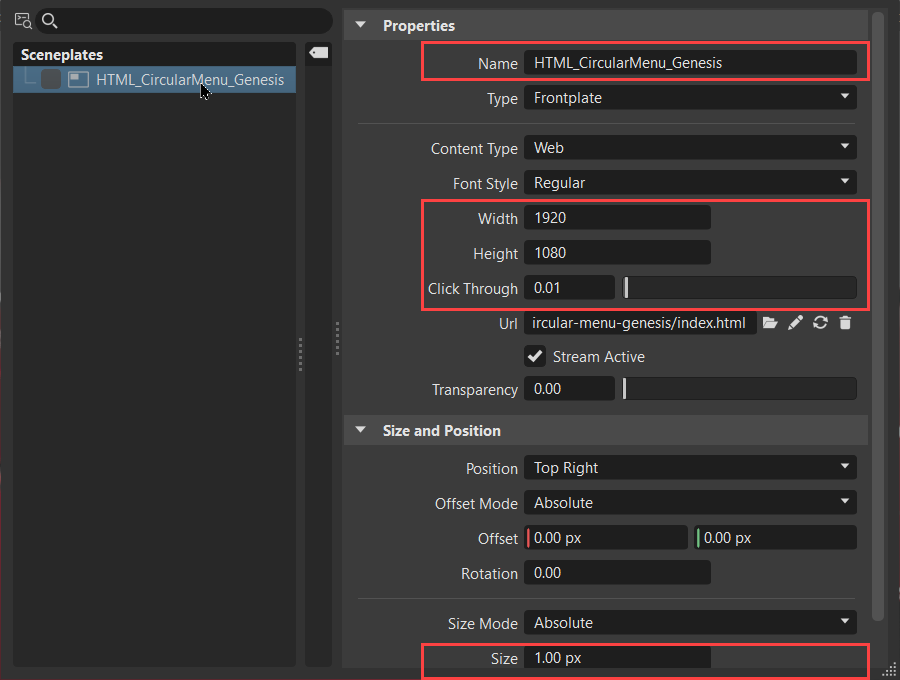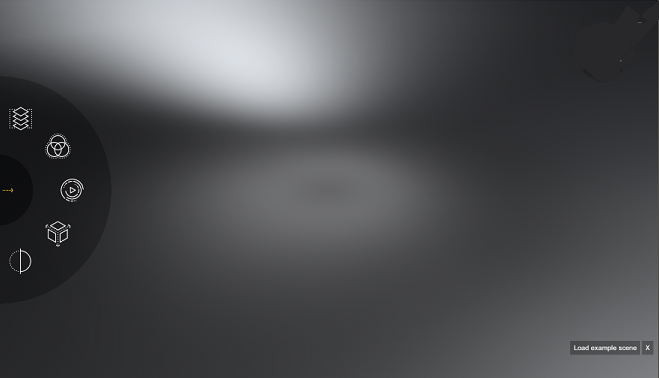Creating and Managing Frontplates
Use frontplates (formerly known as overlays) to create car variants, to specify the product life cycle state, or to add watermarks, trademarks, or legal information. For meetings, overlay images, such as your company logo, and text, like dates, for presentations.
For reference information, check out:
How to Create a Frontplate
In the Menu Bar, select Scene > Sceneplate Editor.
Right-click in the left side of the Sceneplate Editor and select Create Frontplate.
Under Properties, in the Name field, enter a name for the frontplate and for Content Type, select whether it will be text, web, or an image.
- For a text frontplate, enter the text you want and properties, such as font, color, and transparency.
- For an image frontplate, click the folder icon and select the image you want; if at any point the image is updated, click
 Restore to load the latest version.
Restore to load the latest version.
Under Size and Position, adjust any necessary values.
For absolute scale, pixels are used. For relative scale, percentage is used.
How to Create a Frontplate Switch
Right-click in the left side of the Sceneplate Editor and select Create Switch.
Drag and drop frontplates from the list onto the switch.
Select which frontplate in the switch should be displayed by adding a check.
Note:When a child of a switch is checked, making it visible, the others are automatically unchecked and hidden.
How to Manage Frontplates in the Sceneplate Editor
To duplicate a selection of frontplates, right-click the selection and do either of the following:
- Right-click in the left side and select Edit > Duplicate.
- Click
 (the Duplicate icon) at the bottom of the editor.
(the Duplicate icon) at the bottom of the editor.
To make changes after this, do any of the following:
- To change the order in which frontplates appear in the scene, drag and drop them within the list to rearrange them.
- To group a selection of frontplates together, right-click the selection and select Create Group.
- To show or hide frontplates, check or uncheck them in the Sceneplate Editor list.

